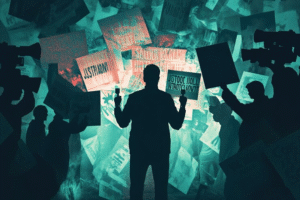From Hollywood blockbusters to bestselling novels, stories about spies and secret missions have always fascinated readers.
But if you’ve ever wondered how accurate those portrayals are, you’re not alone. The truth is, intelligence community fiction walks a fine line between thrilling imagination and grounded reality.
Whether you’re a casual reader, a political science student, or someone curious about the real world behind the curtain, let’s unpack how closely fiction mirrors the operations of actual intelligence agencies and where it takes creative liberties.
What the Movies Get Wrong (and Right)
Let’s start with what fiction often exaggerates. In most spy thrillers, agents leap out of helicopters, dodge bullets, and hack into enemy systems in seconds. In reality, intelligence work is less action-packed and far more methodical.
Real intelligence operations are:
- Built on patient analysis, not shootouts.
- Focused on surveillance, asset development, and information gathering.
- Often bogged down by bureaucracy and legal boundaries.
That’s not to say the field isn’t dangerous. Covert missions, foreign informants, and counterintelligence operations can be life-threatening.
But for every James Bond-style car chase, there are hundreds of hours of paperwork, data analysis, and strategy meetings behind the scenes.
Why Fiction Still Matters
You might think: “If the real thing is slower, why not stick with the facts?” The answer lies in storytelling.
Good intelligence fiction doesn’t just aim for accuracy; it aims to capture the emotional stakes of the story. Writers take inspiration from real-life tactics and operations, then build stories that reveal the ethical dilemmas, political pressures, and personal costs behind every mission.
When done well, intelligence community fiction teaches you more about how espionage truly works than any textbook could.
Where Fact Inspires Fiction
Many authors base their stories on declassified missions, former agent interviews, or insider experiences. They incorporate:
- Tradecraft techniques: like dead drops, safe houses, and encrypted communication.
- Organizational structure: such as the CIA, NSA, MI6, and other global intelligence agencies.
- Geopolitical context: drawing from real-world tensions in Russia, China, the Middle East, and beyond.
This balance of fact and fiction helps ground a story, giving you a world that feels both believable and suspenseful.
A Case Study: Code Name Boulder Creek
In Code Name Boulder Creek, author Peter S. Eisenhut masterfully blends real-world intelligence procedures with gripping fiction.
The novel follows a former CIA operative and an IBM auditor as they uncover a Soviet plot to sabotage U.S. satellite systems during the Cold War.
Eisenhut’s attention to the structure of military intelligence and use of authentic espionage tradecraft adds depth and realism, making it a compelling read for fans of smart, believable spy fiction.
So, What’s Real and What’s Not?
Real:
- Agents do spend years building assets.
- Missions are planned with surgical precision.
- Intelligence gathering often prevents conflict before it starts.
Fictionalized:
- Solo agents rarely act without approval from multiple departments.
- Gadgets and tech are not as glamorous as you see on screen.
- Most operations don’t unfold over a weekend; they take months or even years to complete.
Still, these fictional embellishments are what make the genre exciting and accessible.

Final Thoughts: The Power of Espionage Storytelling
When you read intelligence community fiction, you step into a world shaped by truth and tension. The line between fact and fiction may blur, but what remains is a deeper appreciation for the unseen forces that shape global events.
Want a deeper dive into Cold War espionage fiction inspired by real intelligence work?
Grab your copy of Code Name Boulder Creek by Peter S. Eisenhut and uncover the secrets hidden behind the headlines.




